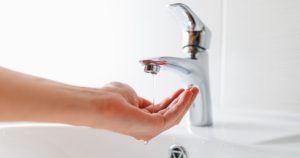Key Takeaways
- A drain stopper is essential for sealing a bathtub drain, but it can become stuck over time.
- Different types of drain stoppers require different removal techniques.
- Regular cleaning and maintenance help prevent drain stoppers from getting stuck.
- If DIY removal fails, professional plumbing services may be necessary.
How to Remove a Stuck Drain Stopper: A Comprehensive Guide
A drain stopper plays a crucial role in sealing a bathtub drain. However, with time, it may become stuck, making it challenging to use. Whether you need to remove your drain stopper for cleaning, repair, or replacement, this guide will walk you through the process for different types of drain stoppers. You’ll also find troubleshooting tips and advice on when to call a professional plumber.
Types of Drain Stoppers and Their Removal Methods
1. Removing a Push-and-Pull Drain Stopper
A push-and-pull stopper features a small knob that you turn to open or close the drain. Follow these steps to remove it:
- Twist the knob counterclockwise to loosen it.
- If it’s too tight, use pliers wrapped in a cloth to protect the finish while turning.
- Once the knob is removed, pull the stopper out of the drain.
- If necessary, use a flathead screwdriver to remove the strainer beneath it.
Maintenance Tip: Regularly clean the stopper and the drain opening to prevent soap scum and hair buildup, which can cause it to stick.
2. Removing a Toe-Touch Drain Stopper
A toe-touch stopper is operated by pressing down to close and lifting to open. If yours needs removal:
- Press down on the stopper to ensure it’s in the open position.
- Use pliers or a screwdriver to unscrew the plunger rod at the bottom.
- Lift the rubber top off the stopper.
- Turn the strainer head counterclockwise by hand to remove it.
Maintenance Tip: Clean the stopper’s moving parts with vinegar and a toothbrush to prevent it from sticking due to grime buildup.
3. Removing a Lift-and-Turn Drain Stopper
A lift-and-turn stopper can be a bit tricky to remove. Here’s how:
- Rotate the stopper to the open position.
- Look for a set screw on the knob. If present, loosen it with a screwdriver.
- If there’s no screw, continue turning the stopper counterclockwise until it unscrews from the strainer.
- If it’s stuck, gently wiggle it while turning to loosen any corrosion or buildup.
Troubleshooting Tip: If you suspect rust or mineral deposits are preventing removal, apply penetrating oil and let it sit for a few minutes before trying again.
What to Do After Removing the Drain Stopper
Once the stopper is removed, follow these steps to clean and inspect your drain:
- Use a flashlight to check for hair, soap scum, or debris.
- Use a drain snake or pliers to remove any visible blockages.
- Rinse the drain with hot water to flush out loosened debris.
- If water still drains slowly, try a mixture of baking soda and vinegar for a natural cleaning solution.
If your drain remains clogged despite these efforts, you may need professional drain cleaning services.
Common Questions About Drain Stopper Removal
How do I remove a stuck drain stopper?
If your stopper won’t budge, try using pliers or a specialized drain stopper removal tool to grip and twist it gently. If it’s still stuck, apply penetrating oil, wait a few minutes, and try again. For persistent issues, calling a professional plumber is the safest option to avoid damaging the drain.
Why is my drain stopper not sealing properly?
Over time, soap scum, hair, and debris can prevent the stopper from creating a proper seal. Cleaning the stopper and drain regularly helps maintain its function. If cleaning doesn’t resolve the issue, the stopper may need to be replaced.
How do I clean my drain after removing the stopper?
Once the stopper is out, remove any visible debris with a drain snake or pliers. Flushing the drain with hot water can help clear any remaining residue. For deeper cleaning, consider using a baking soda and vinegar solution.
When to Call a Professional Plumber
If you’re struggling to remove a drain stopper or it’s severely corroded, a professional plumber can help. Additionally, if you experience slow drainage or frequent clogs, expert intervention ensures a thorough fix without risking damage to your plumbing system.
For expert drain cleaning and repair services, contact BJC Clifton Plumbers at (973) 858-5005 or visit our contact page for assistance.




